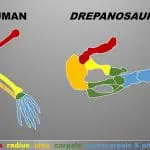[Originally published as Creation Engineering—The Engineer]
The Creation is Engineered — Not Evolved
For over two thousand years, at least. it has been argued that all of the design we see in nature points to a Designer. This argument is called the teleological argument.
In fact, in 44 BC, the Roman writer and statesman Cicero, who lived from 106 to 43 BC, used this argument in his book, On the Nature of the Gods, to challenge the evolutionary ideas of some of the philosophers of that time.
This design argument was refined in 1800 by William Paley (1743–1805) in his book Natural Theology. Paley described the situation of someone finding a watch while walking in the countryside. Paley wrote the following:
In crossing a heath, suppose I pitched my foot against a stone and were asked how the stone came to be there, I might possibly answer that for anything I knew to the contrary it had lain there forever; nor would it, perhaps, be very easy to show the absurdity of the answer. But suppose I had found a watch upon the ground, and it should be inquired how the watch happened to be in that place, I should hardly think of the answer I had before given, that for anything I knew the watch might have always been there. Yet why should not this answer serve for the watch as well as for the stone? Why is it not as admissible in the second case as in the first? For this reason, and for no other, namely, that when we come to inspect the watch, we perceive – what we could not discover in the stone – that its several parts are framed and put together for a purpose,…
Charles Darwin, considered by many to be among the greatest scientists of the 19th century, was required to read Paley’s Natural Theology during his theological studies at Cambridge. Darwin later said, “I do not think I hardly ever admired a book more than Paley’s Natural Theology. I could almost formerly have said it by heart.” Even so, Darwin then spent the rest of his life developing and promoting ideas trying to explain how design in nature could have come about without a Designer. Darwin wrote the following about the apparent design of the eye in his book The Origin of Species, which was first published in 1859:
To suppose that the eye with all its inimitable contrivances for adjusting the focus to different distances, for admitting different amounts of light, and for the correction of spherical and chromatic aberration, could have been formed by natural selection, seems, I freely confess, absurd in the highest degree.
Yet, Darwin tried to convince himself and many others that natural selection could explain such complexity of the eye.
William Paley’s argument for design continues:
“Nor would it, I apprehend, weaken the conclusion, that we had never seen a watch made – that we had never known an artist capable of making one – that we were altogether incapable of executing such a piece of workmanship ourselves, or of understanding in what manner it was performed; all this being no more than what is true of some exquisite remains of ancient art, of some lost arts, and, to the generality of mankind, of the more curious of productions of modern manufacture. Does one man in a million know how oval frames are turned? Ignorance of this kind exalts our opinion of the unseen and unknown artist’s skill, if he be unseen and unknown, but raises no doubt in our minds of the existence and agency of such an artist, at some former time and in some place or other.”
Using only common sense, Paley’s argument seems not only plausible but robust.
However, Darwin countered Paley’s design argument by proposing that small, useful changes in lifeforms could occur by chance and enable their living possessors to survive and pass on these changes by a mechanism called natural selection.
Darwin wrote, “It has been objected that in order to modify the eye and still preserve it as a perfect instrument, many changes would have to be effected simultaneously, which, it is assumed, could not be done through natural selection; but as I have attempted to show in my work on the variation of domestic animals, it is not necessary to suppose that the modifications were all simultaneous, if they were extremely slight and gradual.”
Some scientists consider natural selection to be a real process, but science shows that the variations in the process are limited to changes within a kind. The creationist would argue that science shows that these variations are extremely limited and never have extended to macroevolutionary changes from one kind to another kind; and are engineered within each living organism by the Creator Engineer.
There is no scientific or biblical evidence that living things have all evolved from a common ancestor as proposed by evolutionary theories.
In addition, the description of the process as “natural selection” is flawed in the sense that nature (or environment or ecology) is not intelligent and therefore is incapable of “selecting” anything. The creationist would emphasize that adaptation of an organism to its environment is due to the innate abilities of the organism and that capability can only have been engineered by intelligence. The evolutionist must attribute intelligence to inanimate things like nature, environment, climate, etc. — a ridiculous idea.
Charles Darwin’s formal education was as a theologian, and he knew very well that his theory promoted atheism. Yet, despite many religious influences in his life, he spent over twenty years developing godless theories. It is known that Darwin was deeply influenced in his search for a godless explanation for origins by his lack of consideration of God’s holy nature. This fault impacted his understanding of the human suffering, disease, and death he witnessed all around him.
Darwin himself suffered extreme ill-health for most of his working life. A careful analysis of the attacks of vomiting, insomnia, heart palpitations, headaches, spells of fainting, spinning head episodes, and other symptoms he exhibited on an almost constant basis leads many to contribute his ill health to psychogenic origins. Today, we might call this an anxiety-caused psychoneurosis. It is my opinion that Darwin knew his theories were placing him in a precarious position with regard to his relationship to God.
Here is how Paley summarized his teleological argument:
Every observation which was made in our first chapter concerning the watch may be repeated with strict propriety concerning the eye, concerning animals, concerning plants, concerning indeed, all the organized parts of the works of nature.”
Darwin’s imaginations have been entirely disproved today by science. What is seen in the creation is design and the marvelous work of a master Engineer, not the work of inanimate nature. People continue to conjure up ideas like those of Darwin in order to convince themselves that by doing so they can reject the Creator God. God will allow this kind of thinking for a time (see Romans chapter 1), but the consequences are severe!







